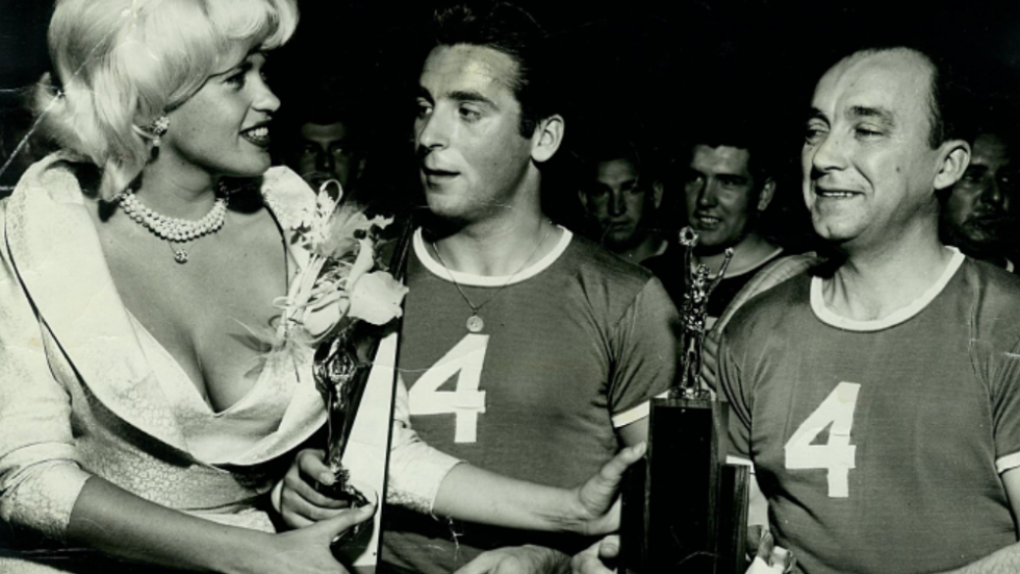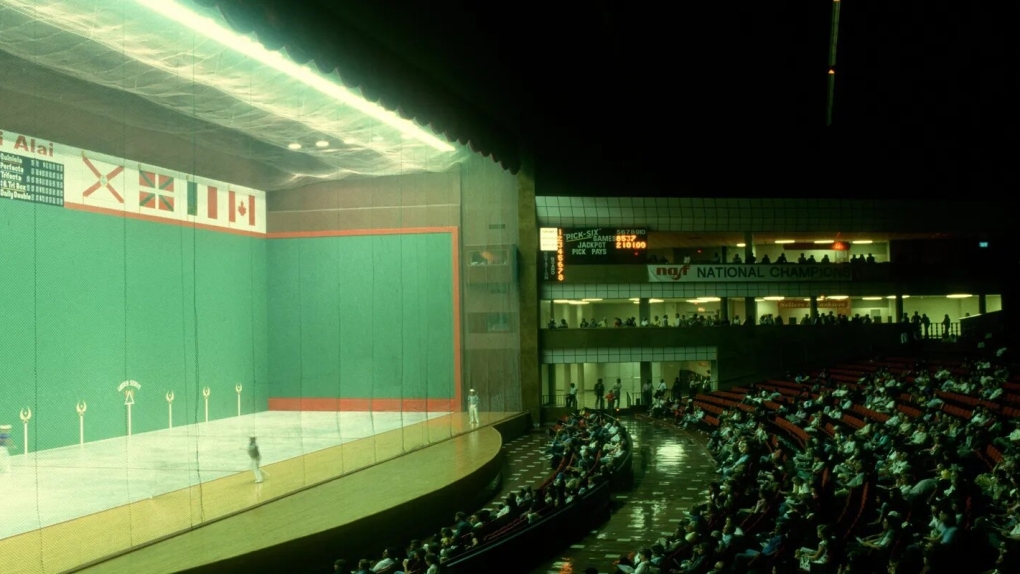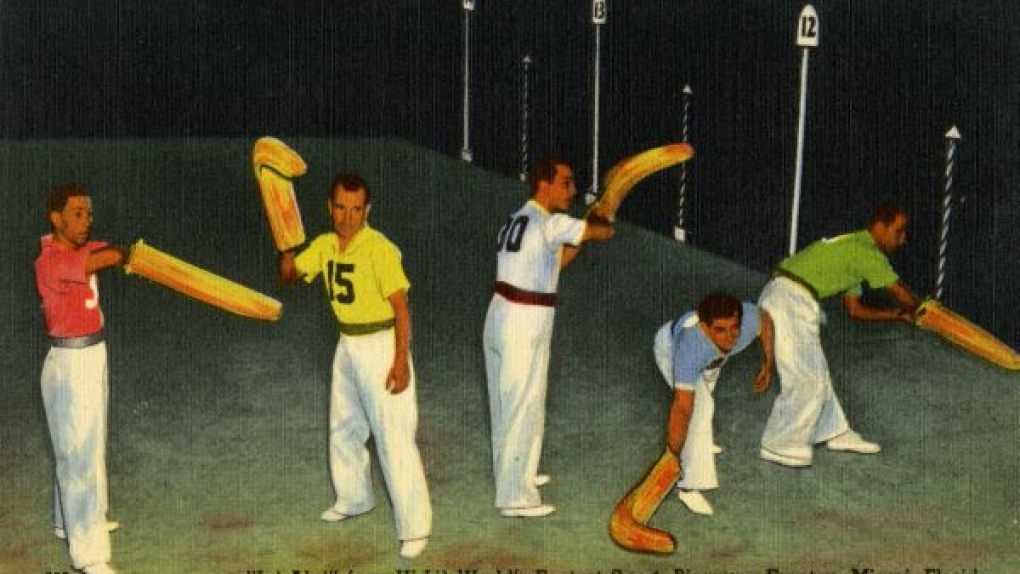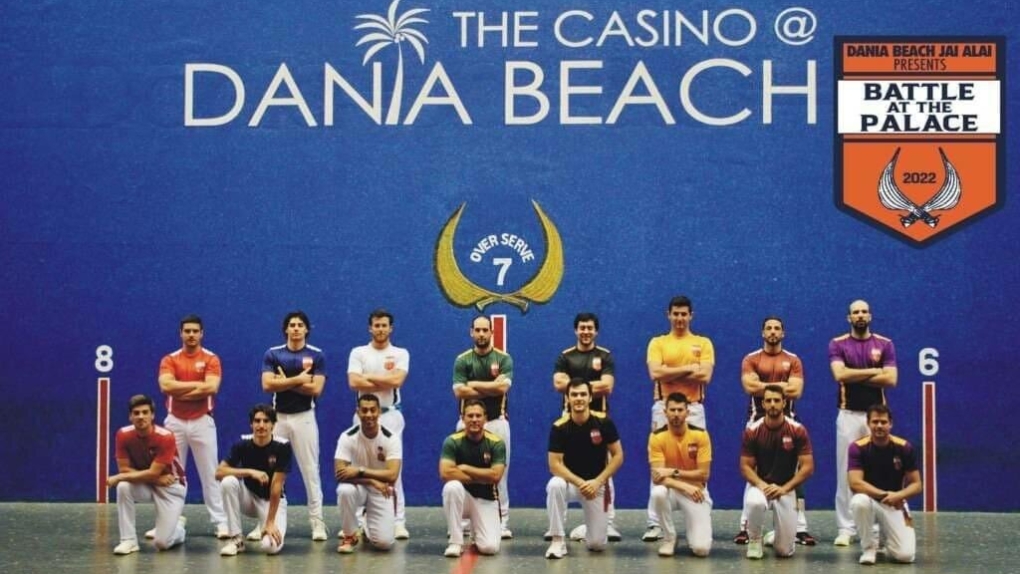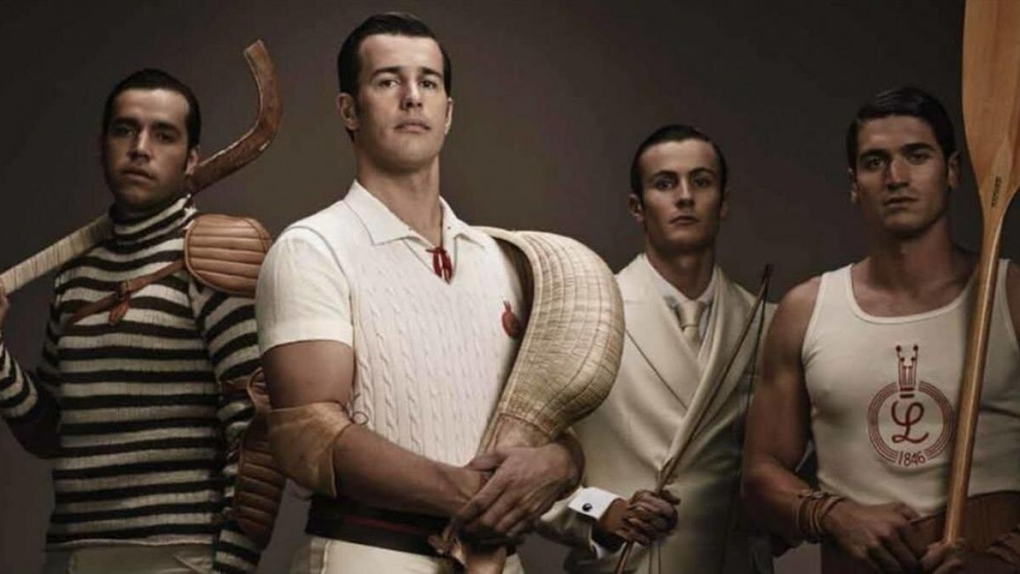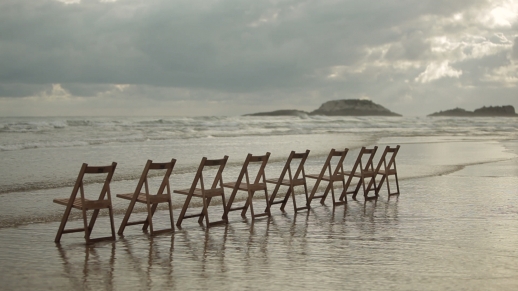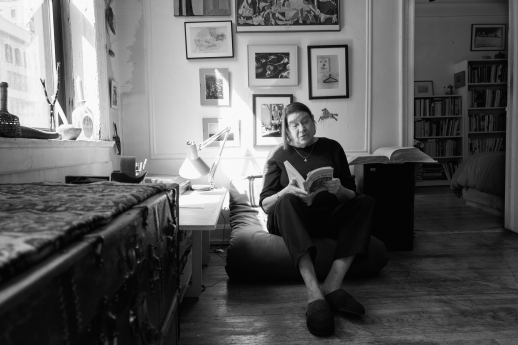The closure of the Jai Alai fronton in Dania Beach, Florida, marks the final chapter in professional cesta punta in the United States, once one of the country´s largest gambling events. This form of Basque pelota spread around the world but experienced its golden age on the U.S. East Coast in the 1970s.
The end of the American dream for Basque pelota
14 Jan 2022Jai alai, or cesta punta, was one of Ernest Hemingway´s passions, surprised Orson Welles on his visit to the border of the Basque lands, seduced Errol Flynn, Paul Newman and John Travolta, and became one of the largest gambling enterprises in the United States. This form of Basque pelota enjoyed the American dream for decades and had its greatest sanctuary in the state of Florida. However, the final chapter of jai alai in the United States has just come to an end with the closure of the last professional fronton, Florida´s Dania Jai Alai.
At the end of the nineteenth century, this spectacular variation of Basque pelota, with its high-stakes wagers, gained popularity around the world, spreading to Europe, Argentina, Cuba, Mexico, the Philippines, Egypt, China and the United States. But nowhere was it as popular as in Florida.

The sport came to the United States with Basque immigrants, who built the first pelota courts beside the Basque hotels. These guesthouses, run by Basque immigrants catering mainly to their compatriots from the other side of the Atlantic, became focal points for the Basque-American community. Naturally, amateur frontons associated with these lodgings quickly became widespread.
Basque pelota was also an official sport at the 1900 Summer Olympics in Paris; in fact, Spain won its first gold medal in Paris in the Cesta Punta category. The sport received a significant boost from its Olympic presence: In 1901, the first match recorded in the American press was played at Eder Jai in San Francisco, and in 1904, a large pelota court was built for the World´s Fair in Saint Louis, Missouri.
Two decades later, this variation of Basque pelota would make its way to Florida, although the strongholds of cesta punta at the time were Havana, Mexico City, and the Novedades fronton in Barcelona. Former jai alai player Gonzalo Beaskoetxea is a leading historian and author of several books on cesta punta. "From the 1950s and particularly the 1960s onward, cesta punta began to gain momentum in Florida. With the closure of the Havana fronton, the sport gained traction in the United States and from the late 1960s onward, experienced a surge in popularity. In a few years, a dozen commercial frontons were built, mostly in Florida, but also in other states such as Connecticut. At one point, there were as many as 16 professional frontons in the U.S. In Florida, it ranked as the second most popular sport after American football," explains Beaskoetxea.
At one point, there were as many as 16 professional frontons in the U.S. In Florida, it ranked as the second most popular sport after American football.
Beaskoetxea went to Miami in December 1970 from his home town of Gernika, where he had made his debut two years earlier. He arrived in the new epicenter of Basque pelota at its peak at just 16 years of age. "The atmosphere was incredible. In 1974-1975 there would be 15,000 people at a match. On a Saturday morning there were 9,000 and on a Friday night, 10,000. On any given day of the week 6,000 people were watching cesta punta."

The Miami fronton became a major powerhouse, recruiting the best pelotaris in the world, as well as dozens of basket makers and other related professionals.
“90% of us were Basque. Cesta punta was also experiencing a good moment in the Basque region, and in the summer we asked to be allowed to play at home, where there were very important championships. In the United States we worked long hours. We were at the fronton six days a week, often playing two matches. It was a grind, but it was what we wanted. And they paid really well, especially considering the exchange rate with the peseta. We felt recognised and highly appreciated," said Beaskoetxea.
For those three strike years, the custom of attending the fronton was partially lost, and as a result, the entire well-structured system began to collapse.
Beaskoetxea, one of the best pelota players of that golden era of the cesta punta, lived in the United States from 1970 to 1988. He spent his last four years as a professional pelotari in Connecticut. However, 1988 marked the beginning of the end of jai alai.
"The conditions in some of the frontons were not so good, but in others we lived like kings. It was decided to go on strike and we supported it out of solidarity with other players. In the end, the strike lasted for three years and jai alai was never the same again. Other factors also played a role, such as the proliferation of casinos and other forms of gambling. But I think the crucial factor was that for those three strike years, the custom of attending the fronton was partially lost, and as a result, the entire well-structured system began to collapse," he added.

A new era began for cesta punta in the United States in the 1990s, a far cry from the days of wine and roses of the 1970s. Fernando Azkarate, president of Basque Pelota World Council, recalls how cesta punta began to wake up from its American dream.
"A strike here is not the same as in the United States, where the companies saw that they could hire replacement players with little or no professional experience and attract audiences eager to bet. A major conflict erupted between the companies and even among the pelotaris themselves, resulting in a decline in both prestige and the overall spectacle. In recent years, with support from the Basque Government, we´ve tried to relaunch cesta punta by creating an international tournament, the Jai Alai World Tour. Matches have been played outside the Basque region, in locations such as Mexico and Barcelona, but we still haven´t managed to consolidate an international circuit," he said.
The most prominent professional pelotaris, including one of Beaskoetxea´s sons, still divide their season between the United States and the summer festivals in the Basque Country. The sport is so spectacular it has even caught the attention of leading name brands. Both Red Bull and Loewe have chosen Iñaki Osa Goikoetxea, the sport´s most prominent figure over the last few decades, for their advertising campaigns. Cesta punta was even recognised as ´the fastest sport in the world" in a race between motorcycle champion Dani Pedrosa and a ball hurled at 313 km/h´.
Nonetheless, the bare-handed variant has become the favourite among Basque pelota fans, while on the other side of the Atlantic, jai alai has failed to regain the strength it once had in past decades.
The closure of Dania Jai Alai has dealt the final blow for cesta punta in the United States. Small frontons, such as Miami´s Magic City, will still offer exhibition games and other activities, but the last professional pelota roster in the United States is now history.
Beaskoetxea is confident that it is not irreversible, although he calls for more decisive institutional support for a sport "with great potential" that has meant a lot to the land of the Basque language. "For several decades this sport has taken thousands of Basque professionals all over the world. We´ve been ambassadors for our country and have brought back the wealth we generate. The institutions need to recognise what that has meant."
Beaskoetxea also points out that the owners of the Dania Beach fronton have promised not to demolish the court. Like Beaskoetxea, they are still waiting for a chance for the Basque sport that surprised the world.

